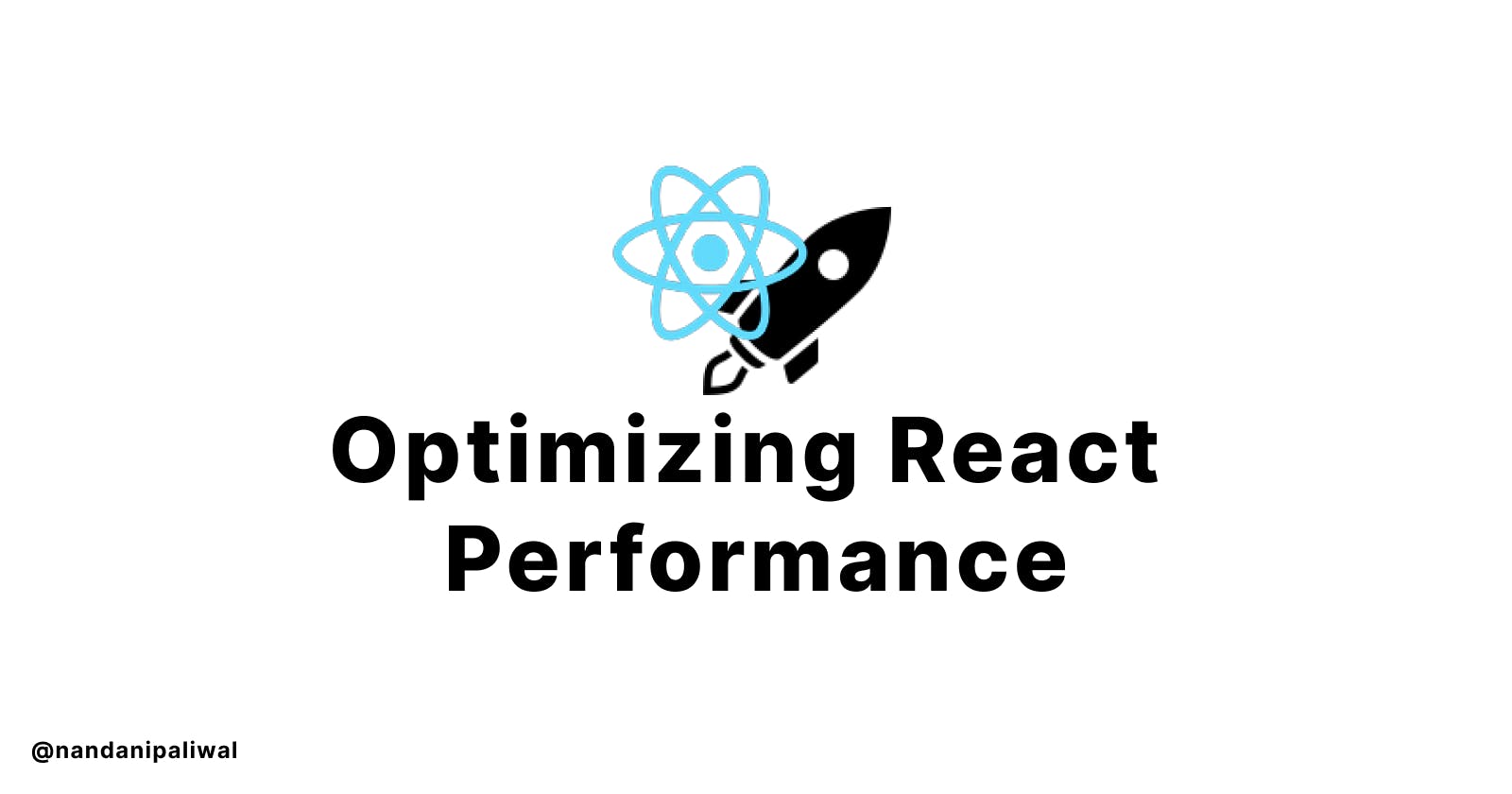Optimizing React Performance
Practical Tips for Boosting Your React App's Speed
Introduction
In the world of web development, performance is key. No one likes a slow, sluggish web application, and that's why optimizing React performance is a critical task for any software developer. In this blog, I'm going to share my personal experiences and practical tips on how to make your React app lightning-fast. We'll dive into some real-world code examples and step-by-step guidance to ensure you're not missing any crucial steps in the optimization process.
Understanding React Performance
Before we jump into optimization techniques, it's crucial to understand what affects React's performance.
The Virtual DOM
React uses a virtual representation of the actual DOM. This virtual DOM helps in efficient updates, but understanding how it works is essential for optimizing performance.
// Sample code to illustrate the Virtual DOM
const element = <h1>Hello, React!</h1>;
Reconciliation
React's reconciliation process is how it updates the virtual DOM efficiently. It's like a game of spot-the-difference between the previous and new virtual DOMs.
// Sample code demonstrating reconciliation
const oldElement = <p>Old content</p>;
const newElement = <p>New content</p>;
Practical Optimization Techniques
Now that we've got the basics down, let's delve into some practical techniques to optimize your React app's performance.
1. Use PureComponent
React provides a PureComponent that automatically implements the shouldComponentUpdate method for you. This can prevent unnecessary renders.
// Code example using PureComponent
import React, { PureComponent } from 'react';
class MyComponent extends PureComponent {
// Your component logic here
}
2. Memoization with React.memo
Memoization is a technique used in computer science and software development to optimize the performance of functions, particularly in scenarios where the same inputs are provided multiple times, resulting in redundant calculations.
In the context of React, memoization can be used to optimize functional components. React provides a built-in feature called React.memo for this purpose. When you wrap a functional component with React.memo, it checks the previous props and only re-renders the component if the props have changed. If the props haven't changed, it returns the memoized (cached) result of the component rendering.
Memoization is particularly useful when dealing with functional components that are expensive to render, especially when their props remain the same over multiple renders. By preventing unnecessary re-renders, memoization can significantly improve the performance of React applications.
Here's an example of how to use React.memo in a functional component:
import React from 'react';
const MyComponent = React.memo((props) => {
// Your component logic here
return <div>{props.someData}</div>;
});
In this example, MyComponent will only re-render if the someData prop changes. If the prop remains the same, it will use the memoized result from the previous render, thus optimizing performance by avoiding unnecessary rendering.
3. Efficiently Handling Lists
When rendering lists, it's crucial to use keys for better performance. Keys help React identify which items have changed, added, or removed.
// Code example for rendering lists with keys
const items = ['item1', 'item2', 'item3'];
const itemList = items.map((item, index) => (
<div key={index}>{item}</div>
));
4. Code Splitting
Implementing code splitting using dynamic imports can significantly reduce the initial load time of your app.
// Code splitting with dynamic imports
import React, { lazy, Suspense } from 'react';
const MyLazyComponent = lazy(() => import('./MyLazyComponent'));
function MyComponent() {
return (
<div>
<Suspense fallback={<div>Loading...</div>}>
<MyLazyComponent />
</Suspense>
</div>
);
}
Optimizing React Performance - A Quick Comparison
Let's take a moment to compare the performance of two different approaches using a table.
| Technique | Renders on Prop Change | Renders on State Change |
| PureComponent | No | Yes |
| React.memo | No | Yes |
| List Rendering | Yes | Yes |
| Code Splitting | No | No |
Conclusion
Optimizing React performance is a continuous journey. By understanding the basics of the virtual DOM and applying these practical tips, you can significantly enhance the speed of your React applications. Remember, building performant apps not only improves user experience but also contributes to your personal brand as a skilled developer.
By implementing these strategies, you can ensure that your React apps are fast, efficient, and highly competitive in today's digital landscape.

